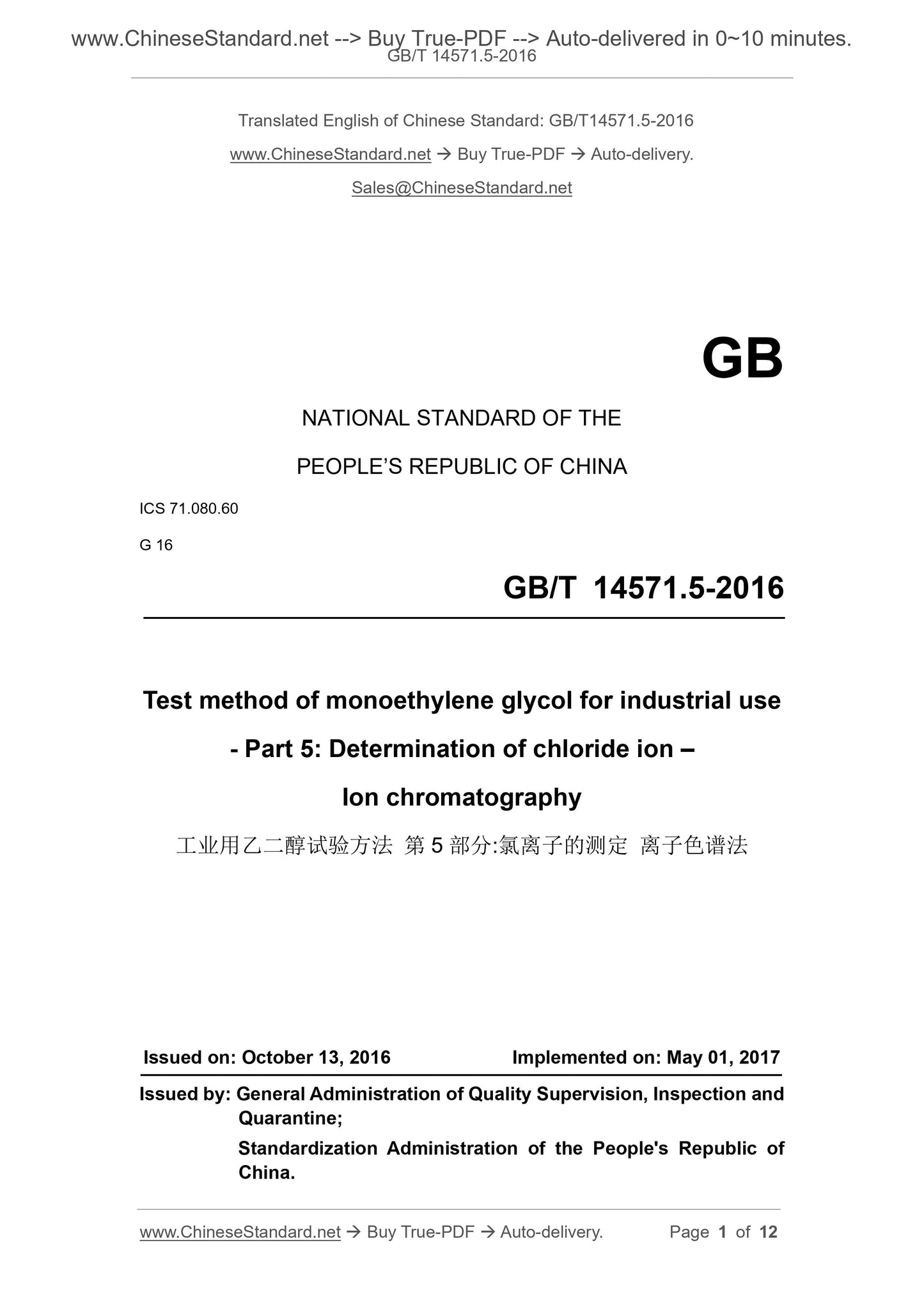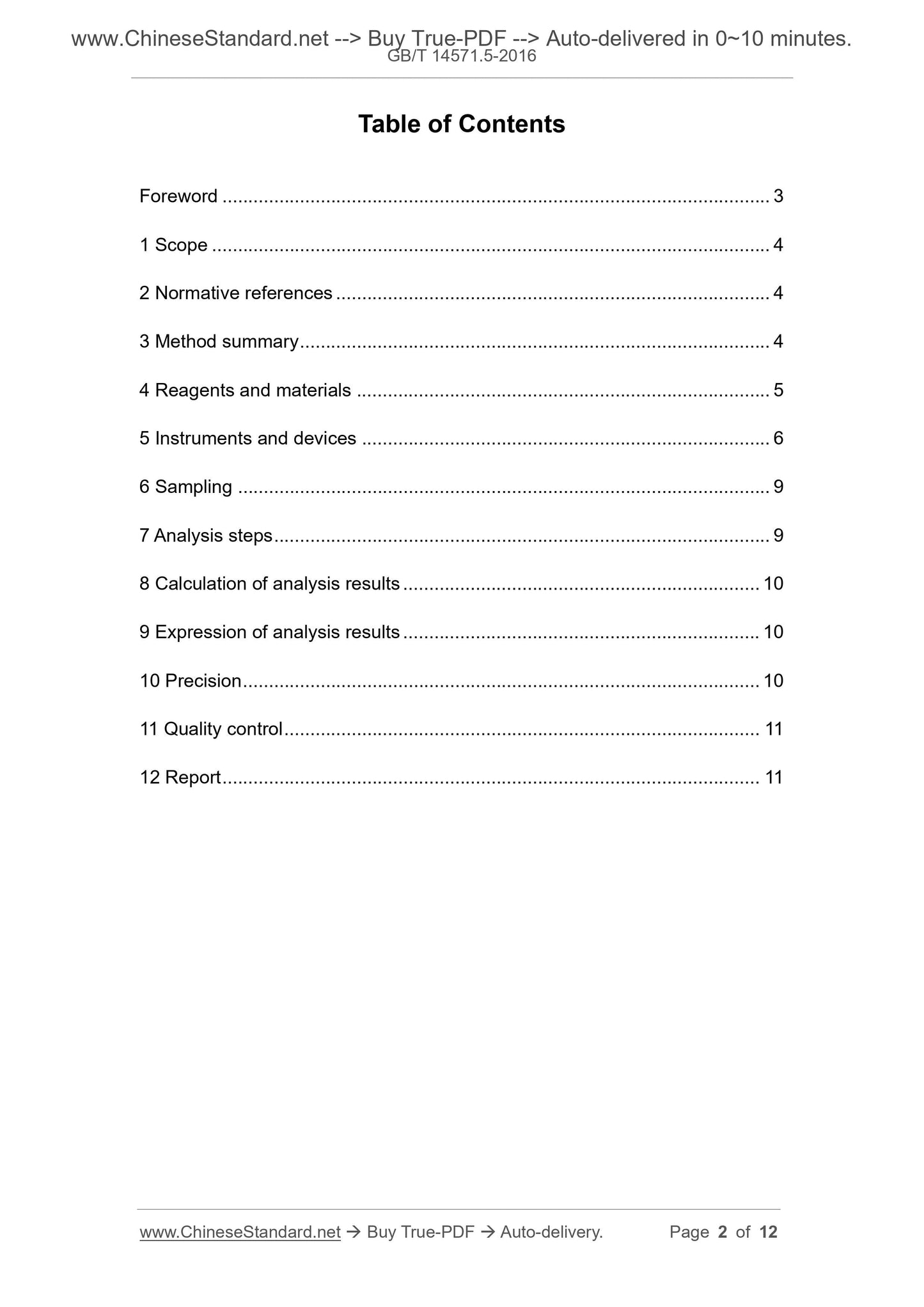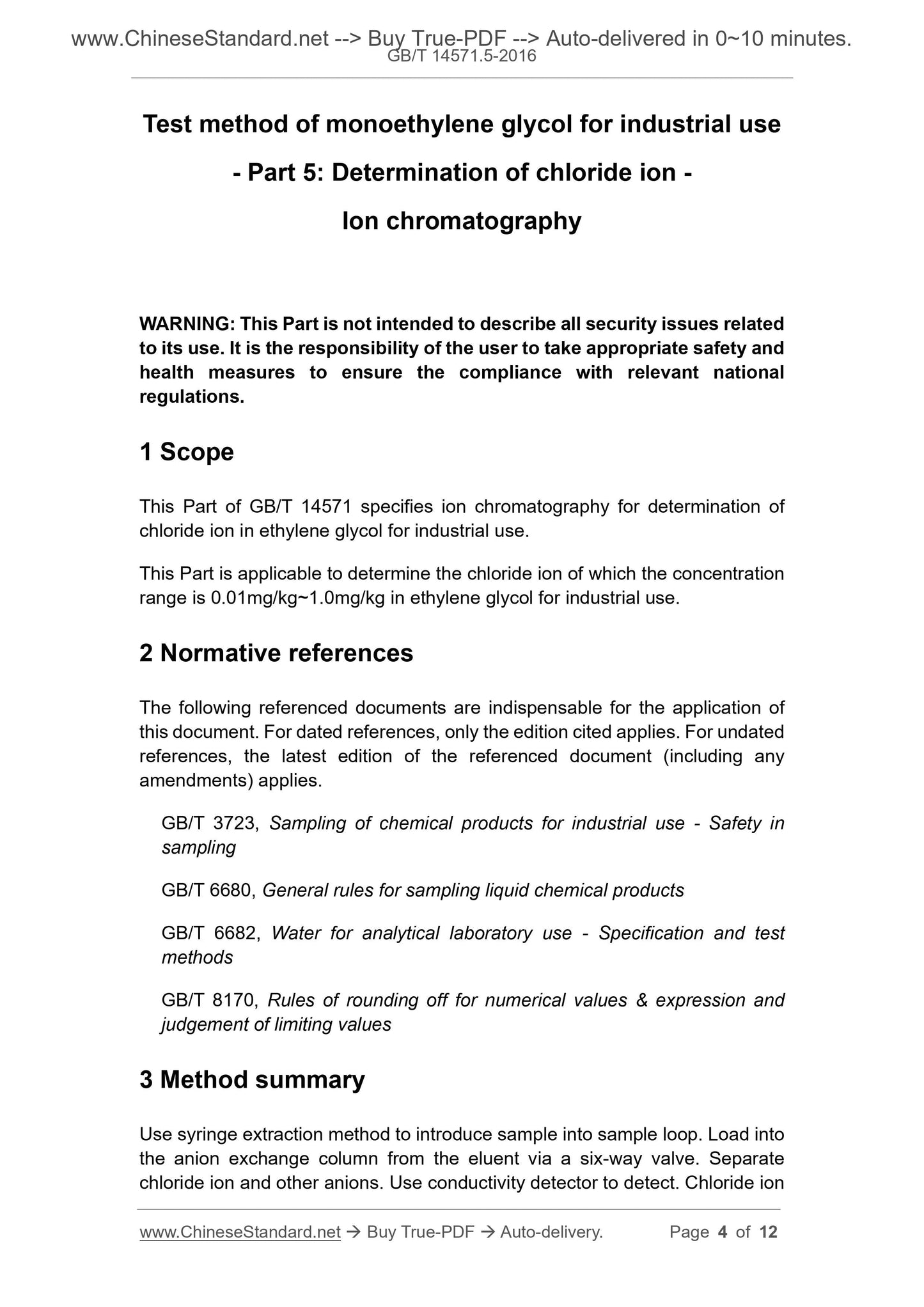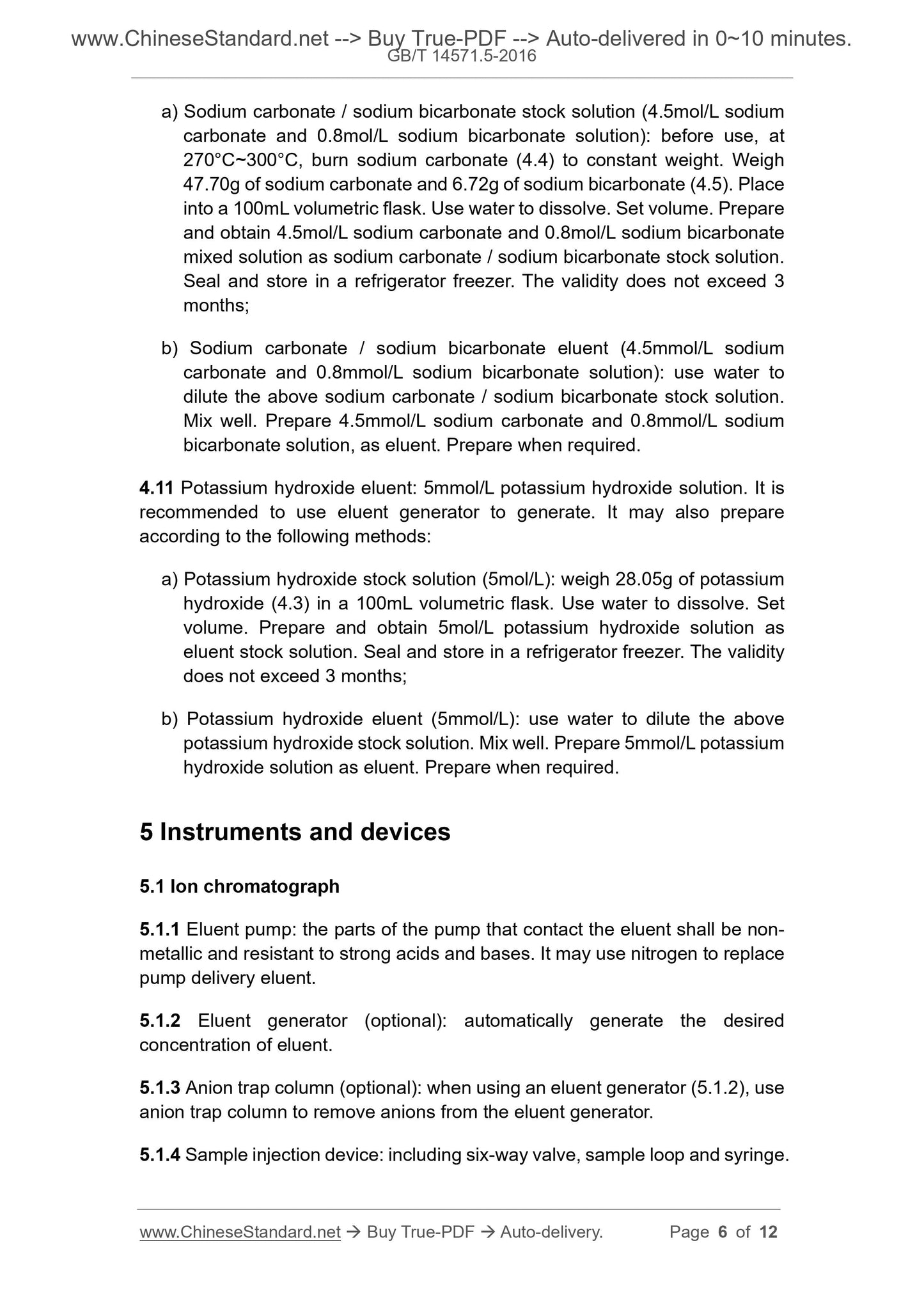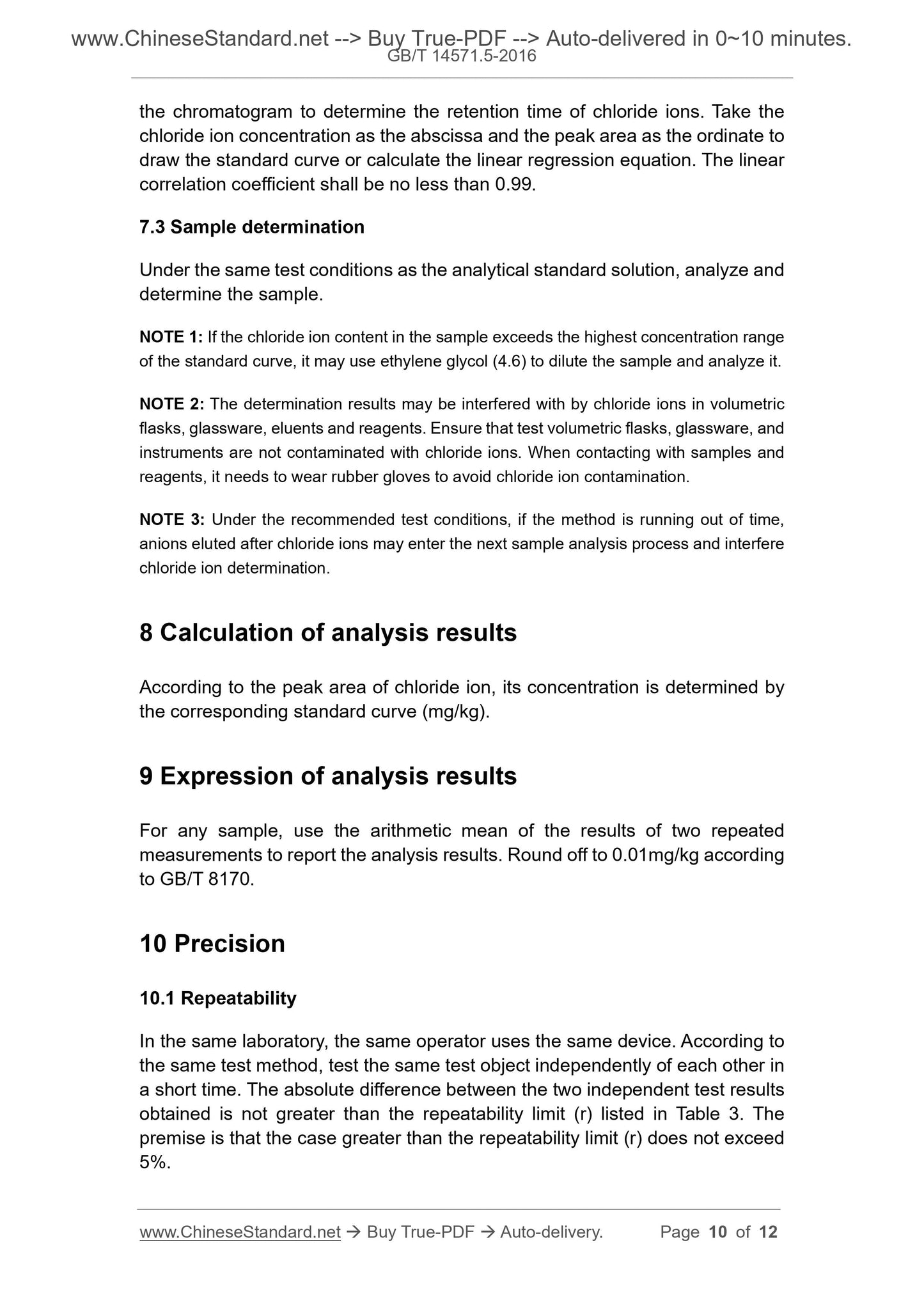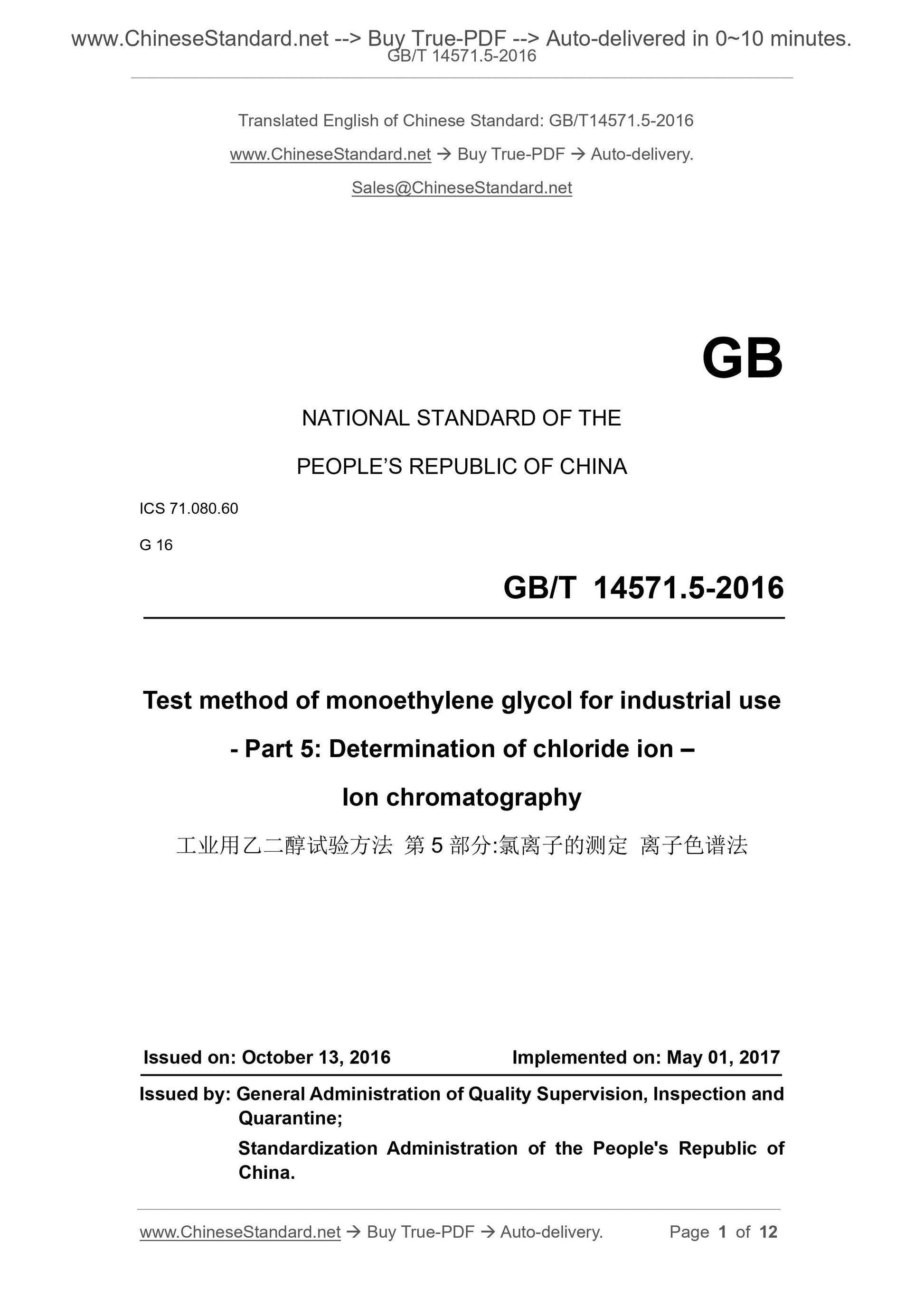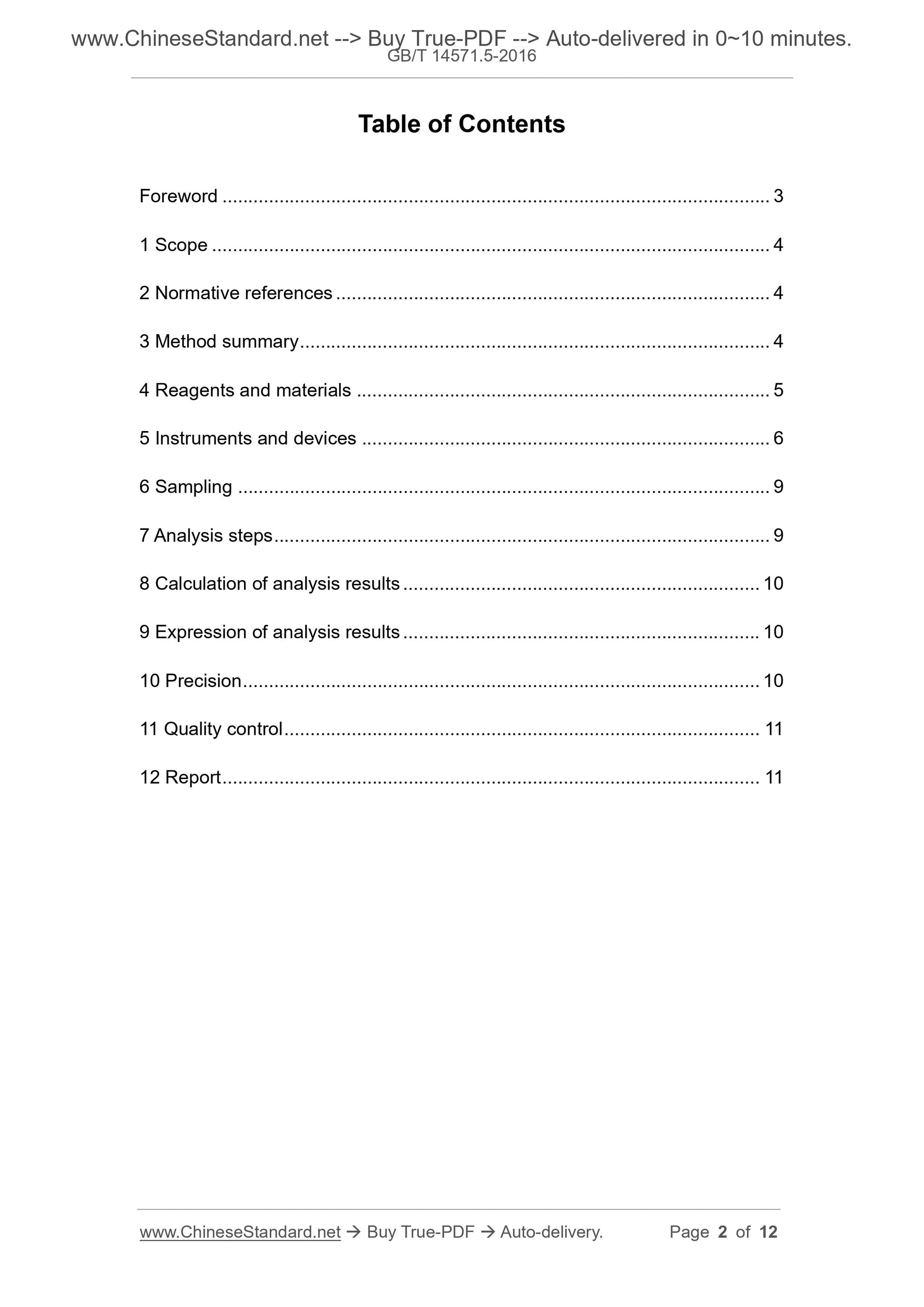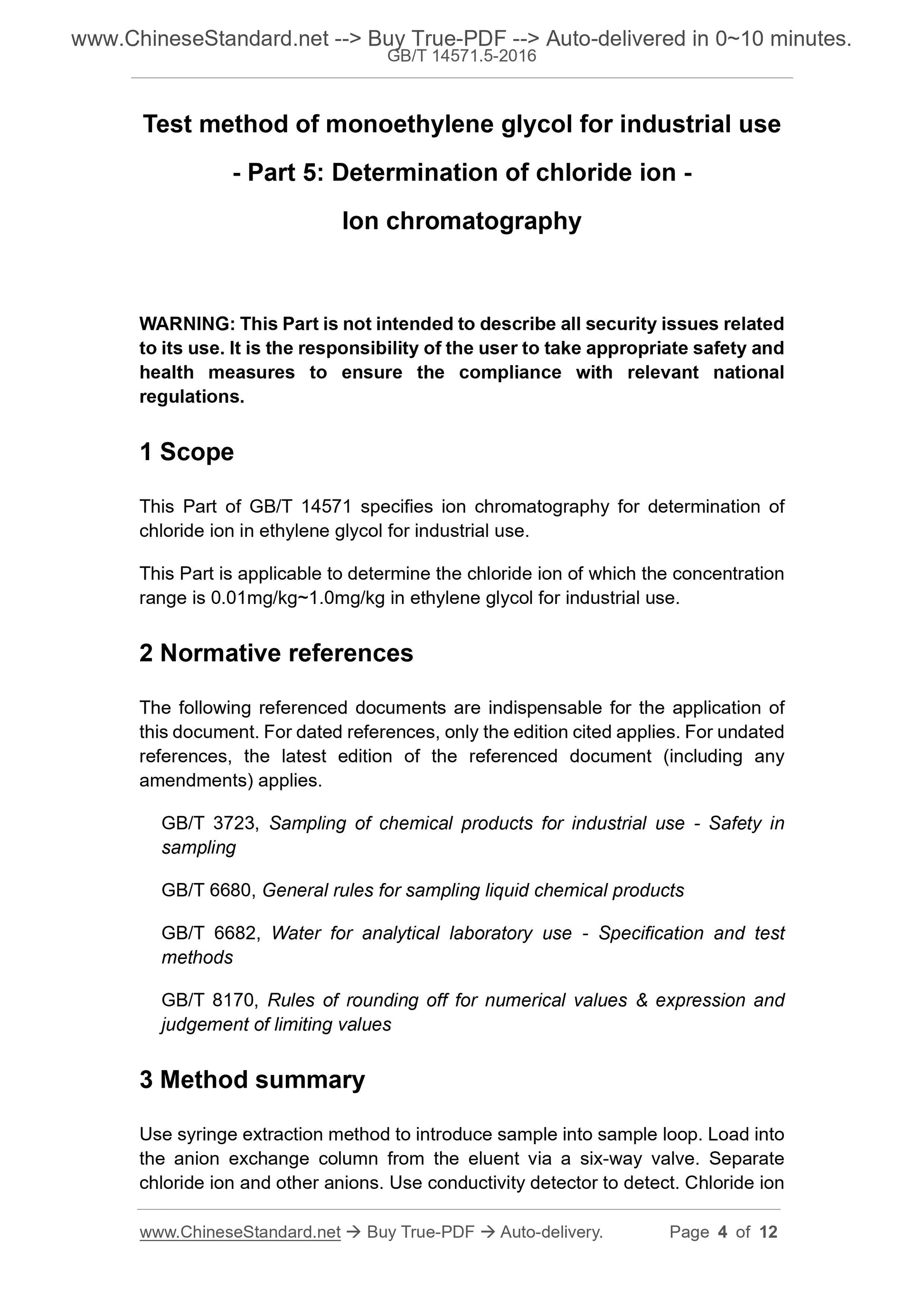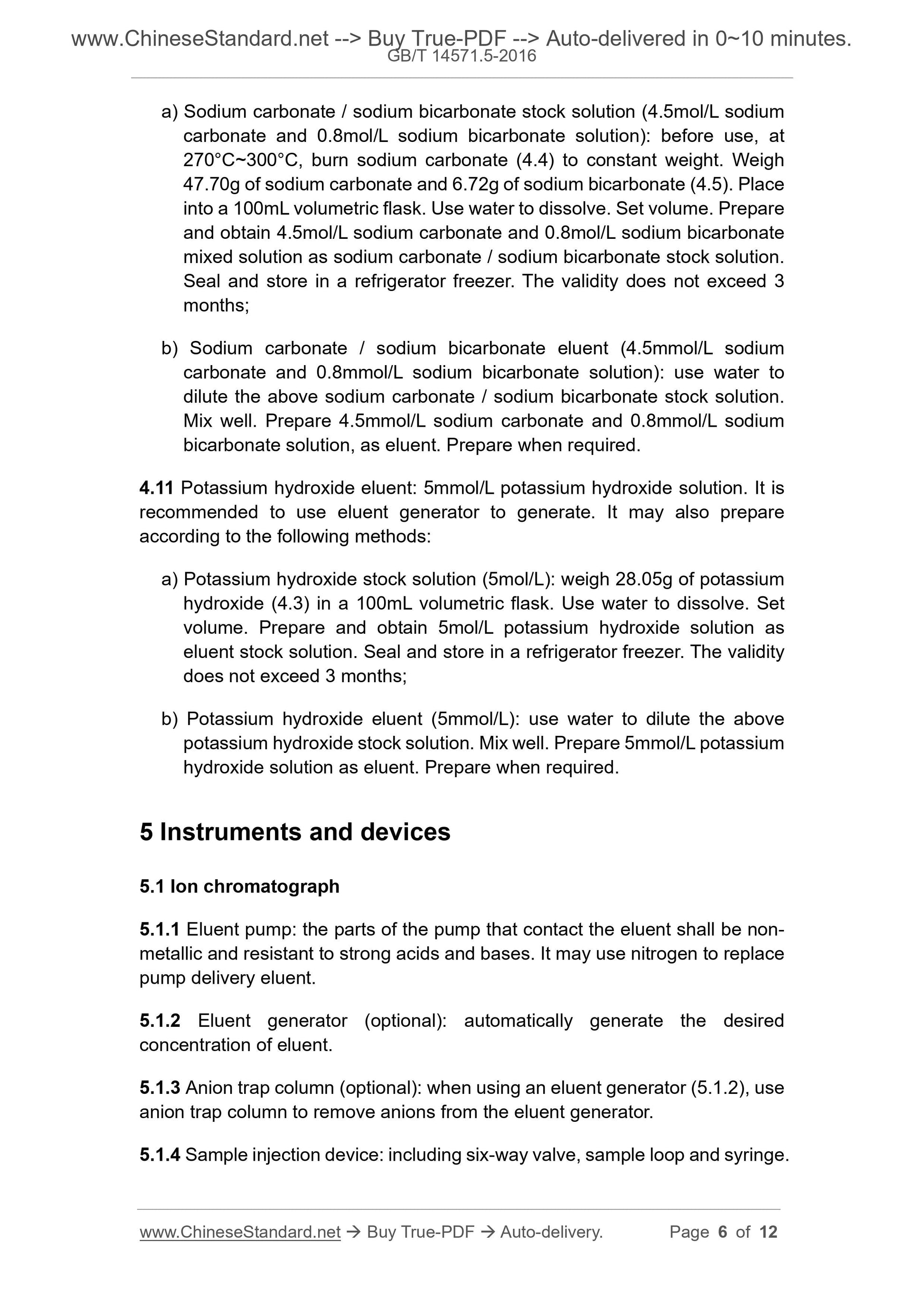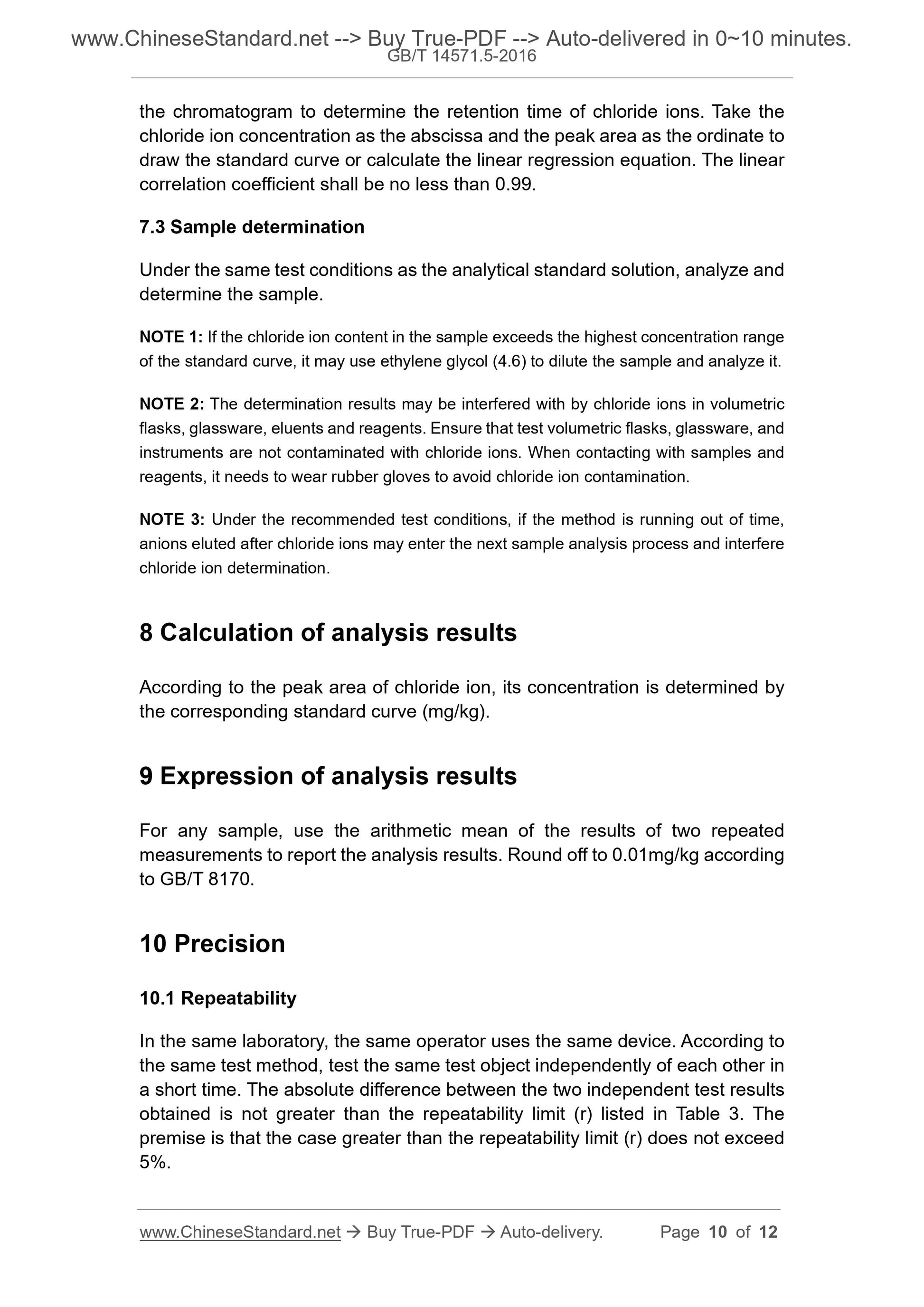1
/
of
5
www.ChineseStandard.us -- Field Test Asia Pte. Ltd.
GB/T 14571.5-2016 English PDF (GB/T14571.5-2016)
GB/T 14571.5-2016 English PDF (GB/T14571.5-2016)
Regular price
$175.00
Regular price
Sale price
$175.00
Unit price
/
per
Shipping calculated at checkout.
Couldn't load pickup availability
GB/T 14571.5-2016: Test method of monoethylene glycol for industrial use - Part 5: Determination of chloride ion - Ion chromatography
Delivery: 9 seconds. Download (and Email) true-PDF + Invoice.Get Quotation: Click GB/T 14571.5-2016 (Self-service in 1-minute)
Newer / historical versions: GB/T 14571.5-2016
Preview True-PDF
Scope
This Part of GB/T 14571 specifies ion chromatography for determination ofchloride ion in ethylene glycol for industrial use.
This Part is applicable to determine the chloride ion of which the concentration
range is 0.01mg/kg~1.0mg/kg in ethylene glycol for industrial use.
Basic Data
| Standard ID | GB/T 14571.5-2016 (GB/T14571.5-2016) |
| Description (Translated English) | Test method of monoethylene glycol for industrial use - Part 5: Determination of chloride ion - Ion chromatography |
| Sector / Industry | National Standard (Recommended) |
| Classification of Chinese Standard | G16 |
| Classification of International Standard | 71.080.60 |
| Word Count Estimation | 10,148 |
| Date of Issue | 2016-10-13 |
| Date of Implementation | 2017-05-01 |
| Regulation (derived from) | National Standard Notice No.1716 of 2016 |
| Issuing agency(ies) | General Administration of Quality Supervision, Inspection and Quarantine of the People's Republic of China, Standardization Administration of the People's Republic of China |
Share
